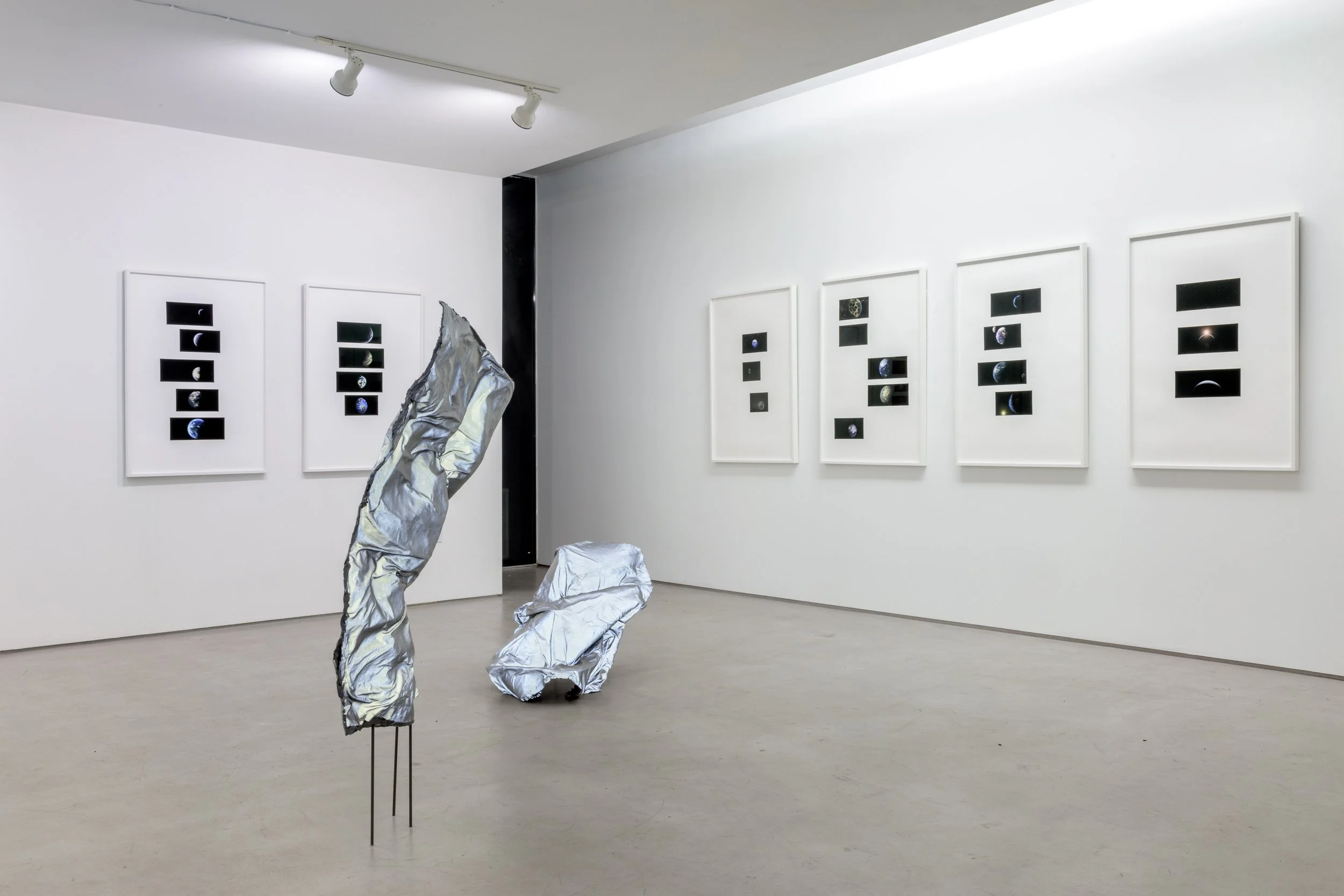Installation view of Gravity’s Peacock. Photography by Joshua White, 2017.
Created by forces, dancing in space, colliding, mass merging, form multiplying, sculpting through physics the celestial body. The earthen body is mapped, observed, inhabited, and imaged. Vienna-based artist Johann Lurf’s Earth series (in collaboration with Laura Wagner) took a closer look at this body’s depiction throughout the history of cinema. Using film stills, the diverse spectrum of this archive presents earths created and imaged by the movie industry: earths created and imaged before the actual earth was ever observed from space; earths created to be imaged after the famous Blue Marble photograph taken by Apollo 17 astronauts; earths created and imaged through vivid, virtual illustration in recent film.
Groupings of the film stills in the Mackey Garage Top revealed common misconceptions and curiosities, which are difficult to perceive in the context of the moving image projection. Evolving methods of image composition and technology show changes in the face of earth over time. Corresponding quotes from the respective film scenes in which the earth appears were displayed, opening the field of narration to individual frames in addition to the greater compositional groupings.
As a counterpoint, Los Angeles artist Brice Bischoff exhibited work from his photographic book and sculptural series, Halo Snuffers. Photographs depicted forms floating in space, draped on other forms, changing color and luminosity, appearing digitally composited, virtual, and holographic. The work was inspired by another imaged body, rather than Earth, this one is corporeal: mid-century American photographer Harry Callahan’s wife, Eleanor. In his book Eleanor, Callahan presents photographs of Eleanor’s changing form and presence over the course of their many years together. For Bischoff, a retroreflective material patented by 3M becomes a philosophical stand-in and muse, á la Eleanor. The material was explored similarly, photographed through innumerable variations, formats, and approaches. The six years of Bischoff’s photographs were compiled into a book that mirrors the layout of Eleanor. Visitors to the Garage Top saw an expanded version of the book on the walls of the gallery.
In addition, new sculptures created for the exhibition were in direct conversation with Lurf’s cinematic mining: lo-fi molds were made of small sections of significant filming locations in Los Angeles and finished with the same retro reflective material. The filmic surfaces, architectural or geological, changed their appearance depending on the angle of light combined with the angle of viewership.
about garage exchange vienna-los angeles
In order to expand the cultural exchange at the core of the Artists and Architects-in-Residence program, the Austrian Federal Chancellery and the MAK Center invite Austrian and Vienna-based alumni residents to collaborate with L.A. artists and architects of their choosing at the Garage Top at the Mackey Apartments for the Garage Exchange Vienna-Los Angeles exhibition series.
This exhibition series is made possible by the Austrian Federal Chancellery.
This project was also supported, in part, by the Los Angeles County Board of Supervisors through the Los Angeles County Arts Commission.

